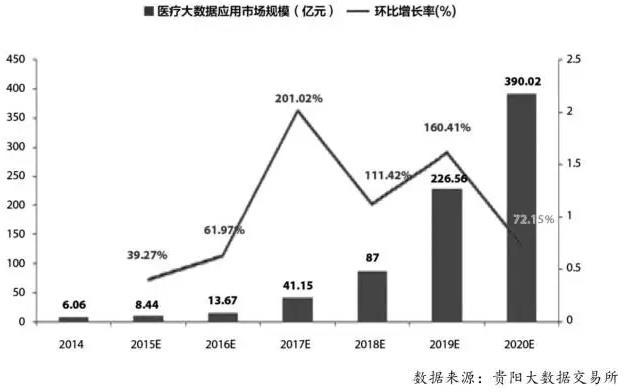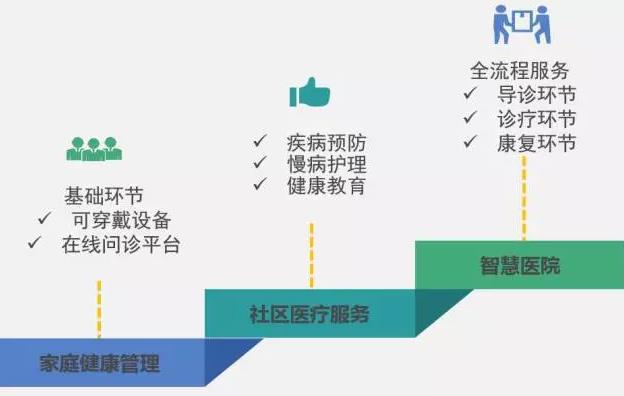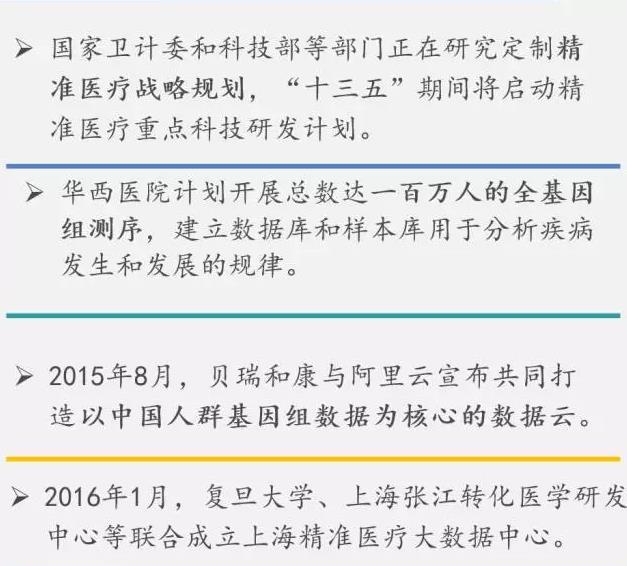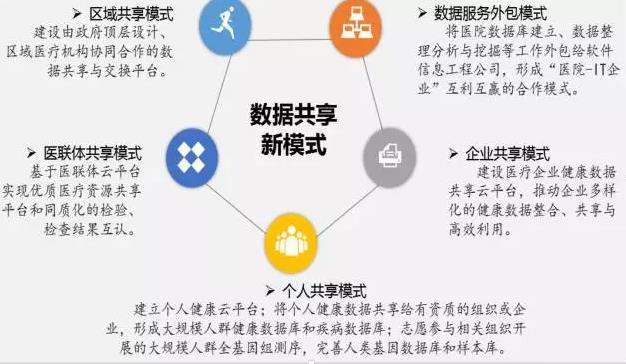
Last month, the China Informatization 100-member conference was held in Beijing. At the annual meeting, China Information Technology 100 people released the "Smart Healthcare and Big Data 2015 Annual Report". The report is the annual research report of the China Informatization Hundred People's Association. The team leader, member of the China Informatization 100-member Association, and Wu Junqing, deputy director of the Zhejiang Provincial Economic and Information Committee, released a report at the meeting.
The report comprehensively sorts out the status quo of China's smart medical care and big data development. It points out that there are data standards in China's smart medical care and big data development that are not unified, the ownership is not clear, data sharing is difficult, lack of effective operation mechanism, industrial planning and system. Sound and other issues, and put forward important recommendations to unify the medical industry data standards, build a new model of data sharing, strengthen the reform of the medical and health system, and optimize the industrial operation mechanism. The following is a summary of the essence of the report.
   I. Analysis of the connotation of smart medical and big data
Smart healthcare is an upgraded development of medical informatization . Through deep integration with big data and cloud computing technologies, medical cloud data centers are used as carriers to provide medical big data services to all parties. To achieve six synergies between doctors and patients, doctors and nurses, large hospitals and community hospitals, medical and insurance, medical institutions and health management departments, medical institutions and drug management, and gradually build a smart medical service system.


Medical big data features:
It has the typical characteristics of big data, namely, the data size, the data structure, the data growth rate (Velocity) and the data value (Value). There are also polymorphisms, incompleteness, timeliness, redundancy, and privacy.
Medical big data type:
Hospital Information System (HIS) data, Inspection Information System (LIS) data, Medical Image Archiving and Transmission System (PACS) data, and Electronic Medical Record (EMR) data.

Second, China's smart medical and big data development situation
(1) The development conditions are becoming more mature.
The demand for personal medical health services is growing rapidly. China's total health expenditure and per capita health expenditure have grown rapidly. The total health expenditure has increased from nearly 759.209 billion yuan in 2004 to 35,312.40 billion yuan in 2014, nearly four times in 10 years, but still lower than that in developed countries. The growing aging and sub-health problems have intensified the contradiction between the shortage of health care services. By the end of 2014, China's population over 60 years of age had reached 212 million, accounting for 15.5% of the total population, and the proportion of sub-health population has exceeded 70%.


The demand for medical big data applications is strong. Enterprises such as pharmaceutical companies, insurance companies, medical hardware manufacturers, and Internet platforms need to use big data applications to reduce costs and increase operating profits.
The contradiction between doctors and patients has become increasingly prominent. Uneven distribution of medical resources and excessive medical treatment have led to increasingly prominent contradictions between doctors and patients. Medical institutions urgently need to reconstruct medical and patient relationships with medical big data, effectively solve the problem of information asymmetry between doctors and patients, registration, waiting, long-term charging, and medical treatment. The short-term "three long and one short" problem.
Health care system reform. In 2014 and 2015, the medical reform policy was frequent. The State Council Medical Reform Office and the Health Planning Commission actively promoted the process of grading diagnosis and treatment, remote diagnosis and treatment, social medical treatment, and medical e-commerce. Dispel the problem of taking medicine to raise medicine, and relieve the difficulty of seeing a doctor and seeing a doctor.
The level of hospital information is constantly improving. In recent years, the informationization of hospitals in China has developed rapidly. In 2014, the IT expenditure of medical institutions in China reached 26.12 billion yuan, laying a certain foundation for the development of smart medical care.

(2) The pace of construction of the medical cloud platform has accelerated.
The medical cloud platforms of various types in China are comprehensive in layout and rich in layers. In the main body of construction and operation mode, a good situation of government and enterprise construction and market operation has also been formed. The construction of China's smart medical cloud platform is mainly supported by three major databases, such as population information database, electronic medical record database and electronic health record database, and supports public health, family planning, medical services, medical security, drug supply and integrated management through platforms. The six major business applications are gradually forming a four-level regional population health information platform for the country, province, prefecture and city.

(3) The sources of medical big data are diversified and growing rapidly.
China's medical big data is mainly composed of three major parts: hospital clinical data, public health data and mobile medical health data. Each data port presents a diversified and rapid growth trend.

(4) The smart medical and big data industry chain has taken initial shape.
All kinds of enterprises have deployed smart medical and big data in hospitals, doctors, patients, medicine, medical insurance, medical examinations, etc., and have flourished in hospital informationization, wearable devices, online medical consulting services, medical e-commerce and other industries. The industrial chain was initially formed.

(5) The innovation of smart medical and big data business models has accelerated.
Medical e-commerce promotes the separation of medicines; online consultation and consultation to reconstruct traditional doctor-patient relationship; telemedicine- assisted grading diagnosis and treatment; intelligent medical and insurance integration innovation development.
(VI) The development of smart medical care and big data in various regions has presented a multi-level step-by-step development pattern.
The four categories of application first zone, characteristic application zone, preliminary application zone and development start zone were initially formed.

Third, the analysis of China's smart medical and big data problems
There are many problems in the development of smart medical care and big data in China. The report is summarized into six aspects:
First, data standards are not unified, ownership rights are not clear; second, data sharing faces multiple obstacles; third, there is no perfect interest incentive mechanism to break the old interest pattern, it is difficult to enter the core medical application field; fourth, the overall lack of effective operating mechanism, The closed loop of online and offline medical care is difficult to form, and there is no feasible profit model. Fifth, the strategic planning and system of sustainable development of the industry is not perfect, the top design is lacking, and the industry supervision is absent. Sixth, the gap between medical and information technology talents is obvious.
Fourth, the wisdom of medical and big data 100 people will agree
In May 2015, the China Informatization 100-members held a seminar on “Application Prospects and Policy Choices for Smart Healthcare and Big Data†in Hangzhou, and proposed six basic consensuses on “Smart Healthcare and Big Dataâ€:

V. Prospects for smart healthcare and big data
(1) Smart medical and big data applications have entered a period of rapid development.
According to the National Development and Reform Commission, before 2018, China will build a unified open portal for national government data, and data in the medical field will be given priority. The next few years will be a period of rapid development of medical big data. According to the Guiyang Data Exchange, the market size of China's medical big data application in 2014 was 606 million. It is estimated that by 2020, this value will reach 39 billion yuan.

(2) Smart medical and big data will reconstruct the order of the medical industry.
Smart Medical will reconstruct the patient-centered industry order and gradually form a three-level progressive family health management, community medical services, and smart hospitals, with a rapid response, mutual assistance, and complete and coordinated medical service structure.

(3) Medical big data promotes the arrival of the era of precision medicine .
China is accelerating the deployment and promotion of the development of precision medicine, implementing the integration of production, education and research, and establishing a system and paradigm for precision medical care through the means of smart medical care and the integration and innovation of traditional medicine.

(4) The regional medical platform promotes the interconnection of medical health data in the region.
Data interconnection is an important step in the development of smart healthcare. The medical institutions at all levels in China have begun to accelerate their data integration and data interconnection within the region.
(5) New business model to develop new space for smart medical care and big data development.
Online business consultation and consultation mode, telemedicine mode, medical e-commerce service mode, medical wearable device data service mode, PBM (pharmaceutical welfare management) China mode and other business model innovations will accelerate the development of the medical industry.

Sixth, smart medical and big data: strategy and choice
(1) Unifying the medical industry data standards and clarifying the ownership of each party.
Promote the legislative work of medical big data, clarify the ownership of all parties; establish relevant service standards, including basic standards, information standards, application standards, facility standards, security standards, and management standards.
(2) Build a new model of data sharing to promote the development of precision medicine.
We will build a new sharing model, such as regional sharing model, medical association sharing model, data service outsourcing model, enterprise sharing model, and personal sharing model, develop medical services based on big data, promote the development of precision medicine, and open the era of personalized medicine.

(3) Strengthening the reform of the medical and health system and building a new system conducive to smart medical care.
Promote institutional reform of the medical industry; strengthen data sharing mechanisms and information applications.
(4) Optimize the industrial operation mechanism and promote the establishment of a new health industry ecosystem.
We will build a new industrial cooperation system with individuals, enterprises, hospitals, doctors and other multi-subjects to participate in an individual-centered approach. Innovate business models, establish new interest mechanisms, and shape new industrial interests.
(5) Strengthening top-level planning and market supervision to promote the orderly development of the industry.
Formulate medium- and long-term top-level plans, focus on “three major directionsâ€, deepen the “five major models†innovation, formulate a roadmap for industrial technology development, and establish an industry supervision system with clear powers and responsibilities.
Three main directions: smart health equipment, health and medical big data services, health and medical information engineering.
Five models: personalized network health services, mobile medical, medical e-commerce, wearable health equipment, big data health management.
(6) Innovative talent training and cooperation methods to provide intellectual security for the development of the industry.
Focus on cultivating health and information technology composite talents, and create an institutional environment conducive to the development of composite talents. Innovative talent cooperation methods, promote standardized training for residents, and improve the understanding and application level of smart medical care.
Mulch Films are a revolution in the agriculture industry as it presents an economical and environment friendly protective solution for crops and soil. It not only maintains the quality of soil but also aids in the faster growth of plants. By reflecting light, it ensures control on growth of weeds as photosynthesis process will not be carried out.
Mulch Film,Sliver Black Mulching Film Sheet,Mulch Film For Greenhouse,Polyethylene Mulch Film
JIANGSU SKYPLAN GREENHOUSE TECHNOLOGY CO.,LTD , https://www.greenhousehydroponic.com